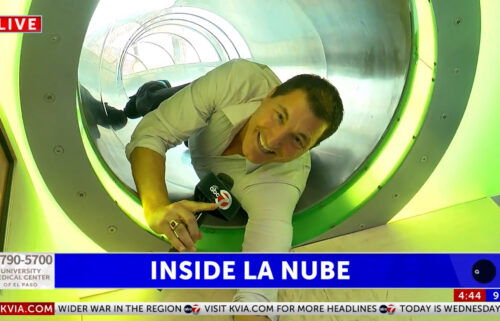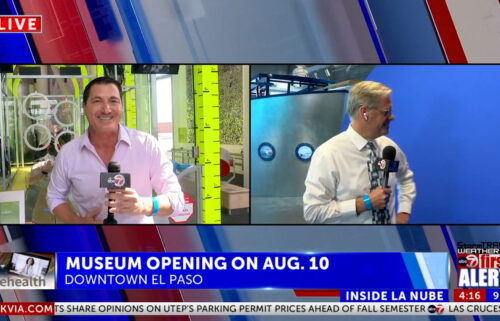Despite ‘daunting obstacles’ and ‘disappointing’ proposal from MLB, Cardinals vet Andrew Miller sees route to baseball in 2020
Click here for updates on this story
ST. LOUIS (St. Louis Post-Dispatch) — Despite a financial proposal from Major League Baseball’s owners that landed with a thud Tuesday and drew sentiments of disappointment and frustrations from players, a veteran union rep still sees a way past “daunting obstacles” to save a 2020 regular season.
“Across the board, players want to play,” Cardinals reliever Andrew Miller, who serves on the Major League Baseball Players’ Association executive subcommittee, wrote in a text message to The Post-Dispatch. “We have shown that desire publicly as well as privately among ourselves. A 2020 season is going to require sacrifices from everyone, and players are certainly willing to make them.
“But we won’t sacrifice our principles or what we believe is right and fair. I believe that despite the daunting obstacles we all face to have baseball this year, we will find a way to overcome them.”
In an attempt to open the 2020 season in early July, the owners have prepared two-track proposals for the players’ union – one to detail the health, safety, and logistics of a season; and the other to determine salary compensation in a season of severely reduced revenue.
Both are being negotiated simultaneously and urgently, with this week and next considered pivotal to having baseball this year.
Major League Baseball and the union acknowledged a financial proposal approved Tuesday and delivered to players. Instead of offering a revenue-sharing model that was initially floated by owners, numerous reports detailed the owners’ formal proposal for progression reduction of players’ prorated salaries, with the highest-paid players taking the deepest cut. According to a formula detailed by The Associated Press, players making the major-league minimum would receive 90 percent of their prorated salary for an 82-game schedule, or $256,706. The percentage of salary reduction would increase, tier by tier, as the player’s salary does, and each player is subject to every tier of cuts below their top tier.
Players making more than $20 million for the 2020 season, for example, would be in the tier with the steepest reduction, at 90 percent of their salary above $20 million, and subject to all six tiers. Based on the formula, the Cardinals’ highest-paid player, first baseman Paul Goldschmidt, would have his $22-million salary for 2020 reduced to $4.2 million. Goldschmidt is in the first year of a five-year, $130-million extension that is the largest contract in Cardinals history, and in addition to his salary he is guaranteed $4.5 million this year from his signing bonus.
ESPN calculated that Angels’ outfielder Mike Trout, the game’s best player, will have his salary cut from $216,049 per game to $70,104.
The highest-paid players could receive less than a quarter of the salary.
Players, according to a report in The Athletic, will also have access to additional bonuses for postseason play – where Major League Baseball finds its television-revenue jackpot.
This opening serve of negotiations was met with predictable comments. The New York Daily News quoted a source saying that proposal as a “non-starter.” Numerous players used an adjective similar to the one Miller did: “Disappointing.”
“This season is not looking promising,” Mets starter Marcus Stroman wrote on Twitter.
The union now has a chance to return volley.
Acrimony between baseball’s union and Major League Baseball has been convulsing for several years as the current Collective Bargaining Agreement nears its expiration. The current rhetoric happens at a time of national crisis during a global pandemic that has seen more than 30 million become unemployed. At the same time, the NHL revealed Tuesday its plan for a return to the ice, and the NBA is also working with its players for how it restarts the 2019-20 season. The bruise baseball will take for its arguing will look worse in light of other professional sports leagues returning, even if the winter sports have a head start with games played and revenue already in pocket from this season.
At the same time, Major League Baseball clubs are approaching the endpoint of financial policies agreed upon when spring training abruptly ended due to the coronavirus’ blitz around the world.
This coming weekend, teams will make their final payments to major-league players based on an agreement reached in late March. This is also the final week of the $400 weekly payments teams pledged to their minor-league players. On Tuesday, as frustration with the owners’ proposal brewed on social media, ESPN reported that the Oakland Athletics notified minor-league players about stopping their salary payments for the remainder of the season.
Each team can determine its own payment after Sunday.
The Cardinals were finalizing their plans for minor-league players this past week. The team confirmed a week ago to the Post-Dispatch that full-time business employees and baseball operations staff had been told they would be paid through the end of June, with no furloughs.
The March agreement that spawned the salary promises through the end of May is also a critical flashpoint between the union and the owners. The players’ union has argued that they already agreed to accept a pay cut for the 2020 season based on a shortened schedule and a prorated salary depending on the number of games played. The owners counter that the March agreement was based on fans being the stands – and ticket sales streaming through the gates – and with empty ballparks come empty revenue, so an adjustment is needed.
The financial negotiations are the largest, most volatile facet of baseball’s return, but not the only one under discussion. Some elements of a shortened and significantly modified season are easier to agree upon. Owners have discussed half a season, and players have sought a longer calendar for added salary. Owners intend to expand the postseason – which would be agreeable to the players based on their access to the additional revenue that would generate. The season would also likely include a universal designated hitter and reorganizing divisions along geographic silos.
The plan for return would also include new policies for on-field play – no spitting, no licking fingers, masks worn in the dugout – and re-entry to the ballpark, and also the essential part of any 2020 season: widespread testing of players and everyone in the game’s tight orbit.
There is ongoing debate between the sides on that, too.
“While the media is focused solely on the economic picture, we still have work to do on a health and safety plan,” Miller wrote in a text message, “as players are not only asked to risk their own health, but that of their families as well.”
Please note: This content carries a strict local market embargo. If you share the same market as the contributor of this article, you may not use it on any platform.




